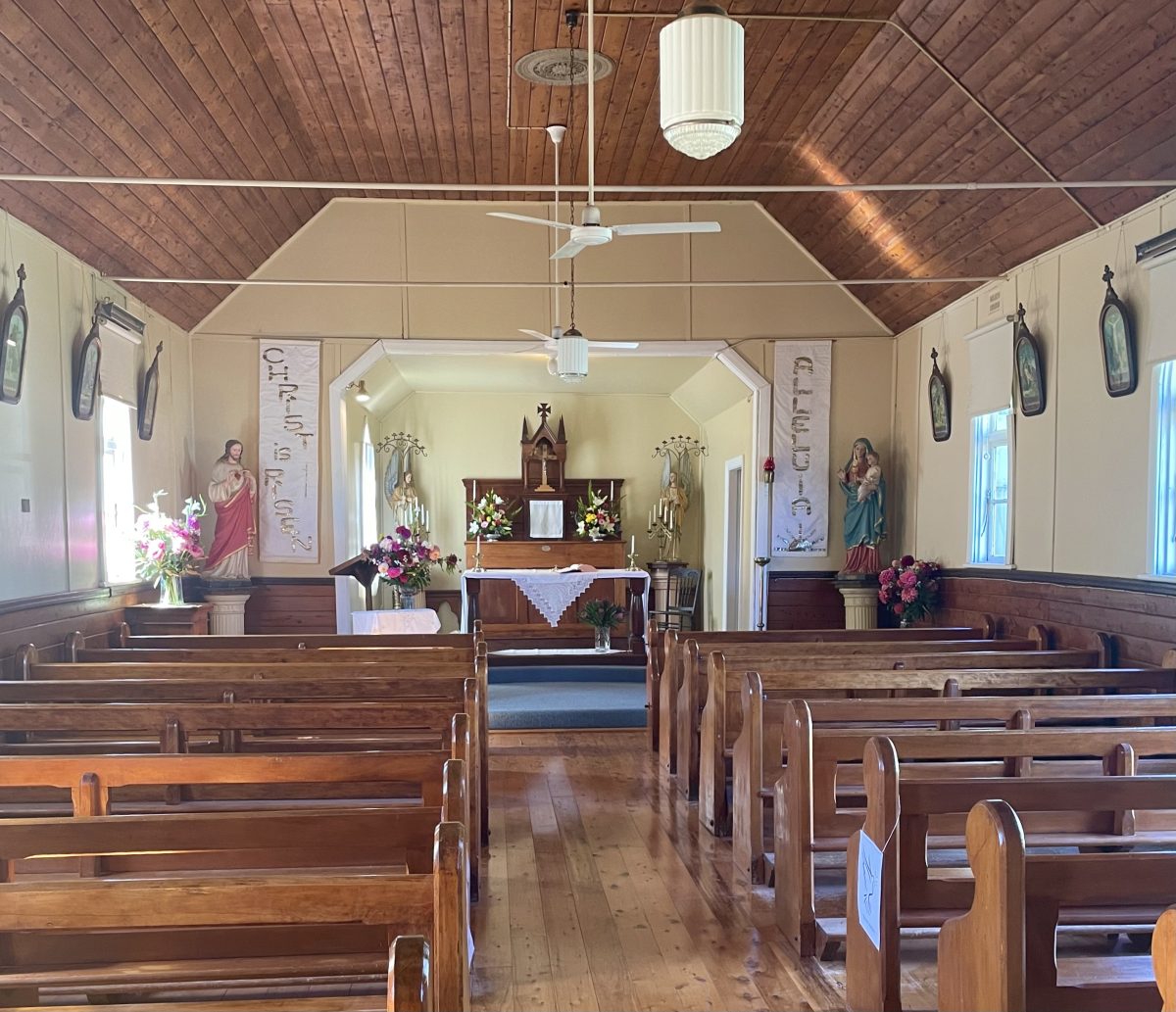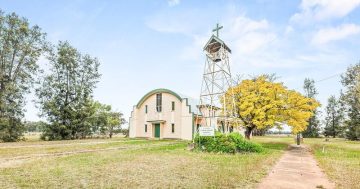
St Brigid’s Quandialla is likely to be sold by the Young parish in the near future. Photo: G Jacobs.
Across rural Australia, small churches are being sold. It’s happening across all denominations: the Anglicans began the process when they sold their rural Tasmanian churches, the diocese of Newcastle followed and now the Catholic Church, in which I was raised.
St Brigid’s Quandialla is a tiny wooden church almost a century old. It sits on land donated by my great uncle Norman, built of timber donated and milled at nearby Bimbi. Every item inside is donated by its people.
On the hot summer mornings of my childhood, the smell of varnish from the slightly sticky pews accompanied Father Cork’s interminable sermons. One day, Stan Nowlan stood up, noting he had several hundred sheep to drench in the yards, so he’d have to leave, thank you, Father.
After Mass, there were cups of tea and kindness and chocolate slice outside the church, produced from picnic baskets and shared beneath the deep shade of white cedar trees planted by my mother and her friends.
I remember us all there – the neighbours and the cousins, Father Brown, who’d been a Rat of Tobruk and smoked too much and drove too fast and tried to teach me how to do the cryptic crossword (unsuccessfully).
Now, nearby St Columba’s at Bribbaree will be sold shortly, and locals have been told via the Young Parish newsletter St Brigid’s is next.
Noting a farewell Mass for Bribbaree, the newsletter says “There will be a similar gathering at a later date, when arrangements are made for the sale of the Quandialla Church”. This was news to Quandialla locals.
Declining rural populations and the shortage of priests will be mentioned, but these are not the only reasons.
For years, communities like ours held their own services with or without a priest. And the church is still very much wanted for events like my Aunty Barbara’s funeral this year where the doors were opened wide for an overflowing congregation.
There’s something more unfair, more prosaic and bitter at the root of all this – the collapse of the Catholic Church’s insurance agency on the back of multiple, wide-ranging claims of sexual abuse by clergy and in church-run institutions.
Catholic Church Insurance is facing likely irresolvable financial turmoil due to abuse claims – an estimated $381 million in liabilities relating to professional standards payouts to various church entities, including dioceses and charities.
A rescue effort is underway and may or may not succeed. But in the meantime, centralised parishes are cutting costs wherever possible.
Small rural communities who built, ran and entirely sustained their churches, fundraised for them continuously, donated their time and money and their faith are bearing the consequences of heinous crimes and mismanagement perpetrated by the clergy and church hierarchy.
The payments are necessary, just and fundamentally important compensation. But in an organisation with such diverse assets, there must be other solutions than a unilateral decision to sell the real estate.
How much money can there be in tiny rural churches in small remote communities compared to the pain caused by their sale? Why not allow parishioners to either buy back the church or pay the insurance?
Quandialla is a tiny place, 150 people at best. It’s smaller than it used to be, but the community is still strong, like many other small places around regional Australia.
Everything I’ve ever done to serve the community comes from growing up in that small world bounded by Bland Creek and Grenfell Rd.
In Quandialla, we won’t give up without a fight. It’s what we’ve always done: work together, depend on our own resources and find our own solutions. If only the Catholic Church will meet us halfway.













